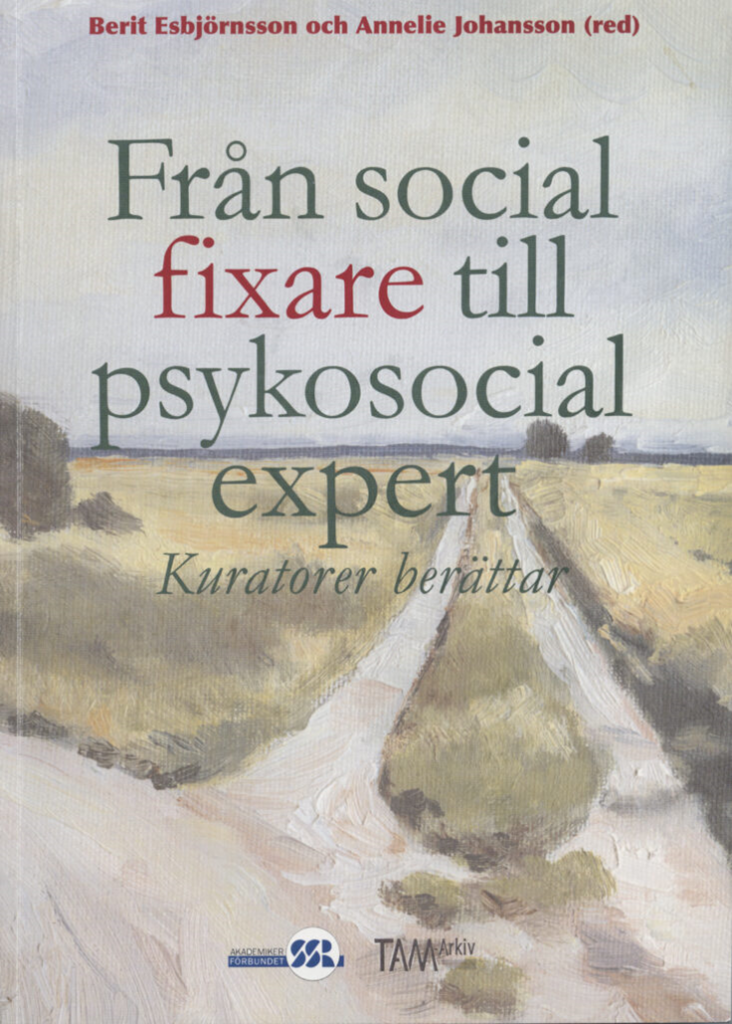Published on August 1, 2023 by Leif Jacobsson
Translation from Swedish by Andreas Lindahl
Today, the health and medical care counsellor is the psychosocial expert in healthcare, but the profession has evolved over time. TAM Archives has published a collection of professional memories in which the health care counsellors themselves have their say.

”To work in psychosocial work is to use oneself as an instrument” Mariann Olsson writes in the foreword to the book. In the anthology, published by TAM-Arkiv in 2006, with memories from hospital curators, an anthology entitled Från social fixare till psykosocial expert: kuratorer berättar (Eng. From social fixer to psychosocial expert counsellors tell their stories – here ten hospital counsellors talk about their experiences. In total, the professional memory collection that TAM-Arkiv organized together with – what was then called – Akademikerförbundet SSR resulted in about thirty contributions. The stories that were not included in the anthology are archived at TAM-Arkiv. They should form a good basis for future studies or research for those interested…
In the anthology, we get to hear stories about what influenced the choice of educational and professional path and how life as a curator has turned out. Often, a social commitment to the family of origin or experiences during childhood can lead to an interest in social issues. It can also be a basis for the will to change the conditions for weak people and groups… Sometimes the profession has been something the future curators dreamed of already early in life. Sometimes the decision to train as a curator has been something that has grown over time. The life stories show the variety.
All narrators entered the profession when the first introduction and consolidation phases of the profession’s development had taken place. The memories reflect how conditions have shifted over the course of history. The development of individuals is thus interwoven in an exciting way with descriptions of the Swedish society’s change over time. In the book, we can follow how the counsellors’ specialist knowledge until 1985 was taken into more and more areas, such as neuropsychiatry and habilitation and care work.
In her foreword, the said curatorial memories of the late 1900s seem worthy her reflection in that they are entirely female, something which Mariann Ohlsson herself tries to shed some light on and ponders, asking herself: ”Men, where are they?” And you might wonder…
In addition to the foreword by social worker Mariann Ohlsson, Christin Johansson – then chairman of the Akademikerförbundet SSR – has also contributed with an introduction to the anthology. She describes the development of the curatorial profession.
The link between people’s health and their social situation was noted already in the early decades of the 1900s. It turned out that hospital patients felt better if they were aided with their social issues. At the same time, healthcare could be streamlined and costs reduced… This was the basis of curatorial work.
It was only until 1914 that those individuals previously termed ”insane” got to see their first-ever curator. Gertrud Rodhe, originally a sloyd and handiworks teacher, came to be the progenitor and champion of social work. She demanded clear referrals and medical opinions from doctors. Her driving force was to monitor and protect the interests and rights of patients when they stayed in hospital.
Although it is common knowledge nowadays that body and mind have a connection, much remains before medical care is fully complemented by the psychosocial dimension, Christin Johansson writes in conclusion. It goes without saying, it truly is an important professional memory collection TAM has been involved in developing.
Literature: Berit Esbjörnsson & Annelie Johansson (ed). 2006. Från social fixare till psykosocial expert: Kuratorer berättar. Available at TAM-Arkiv.
TAGS: #beritesbjörnssonandanneliejohansson #firstevercuratorgertrudrodhe #akademikerförbundetssr #anthology #tamarkiv #tamarkivsverige #book
